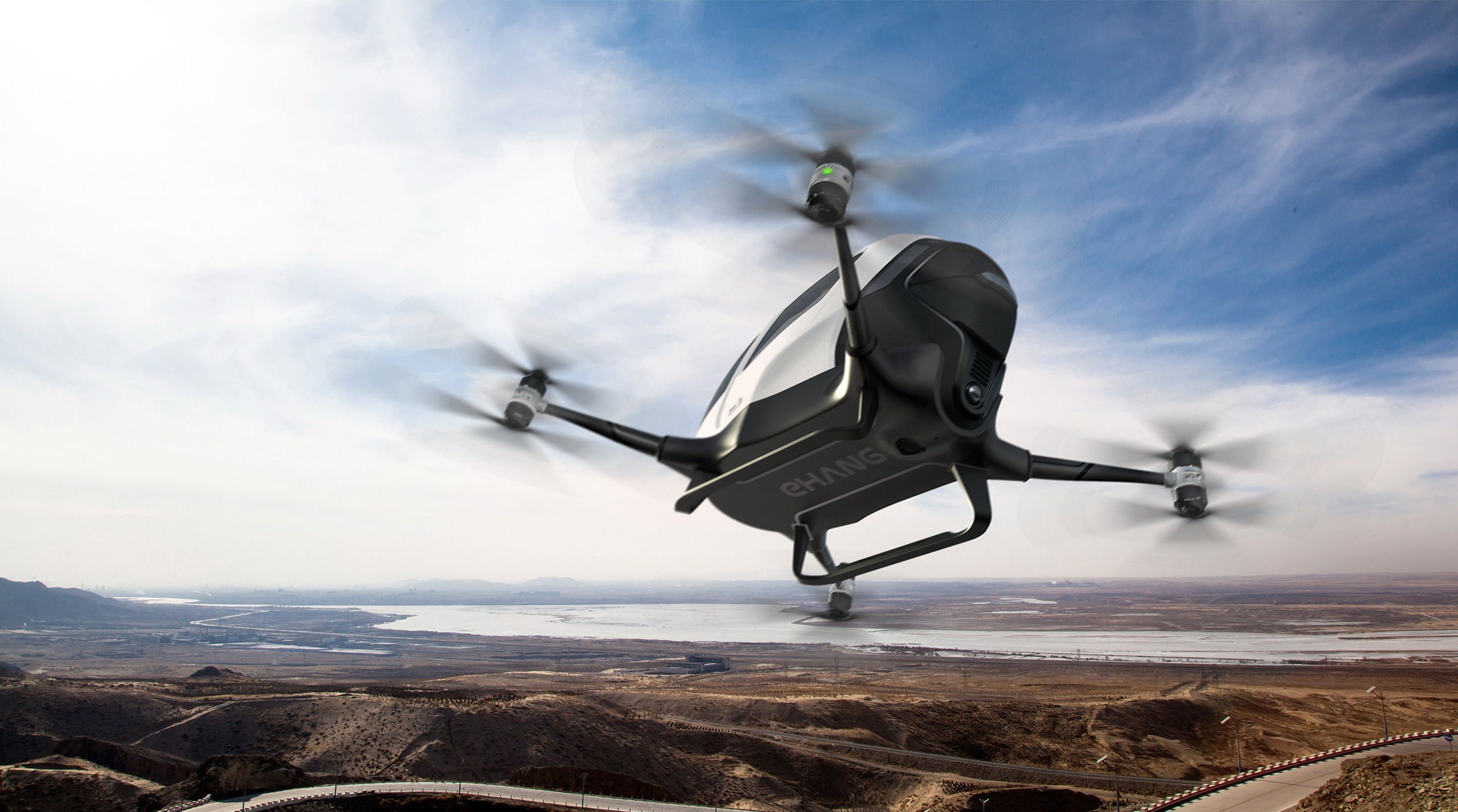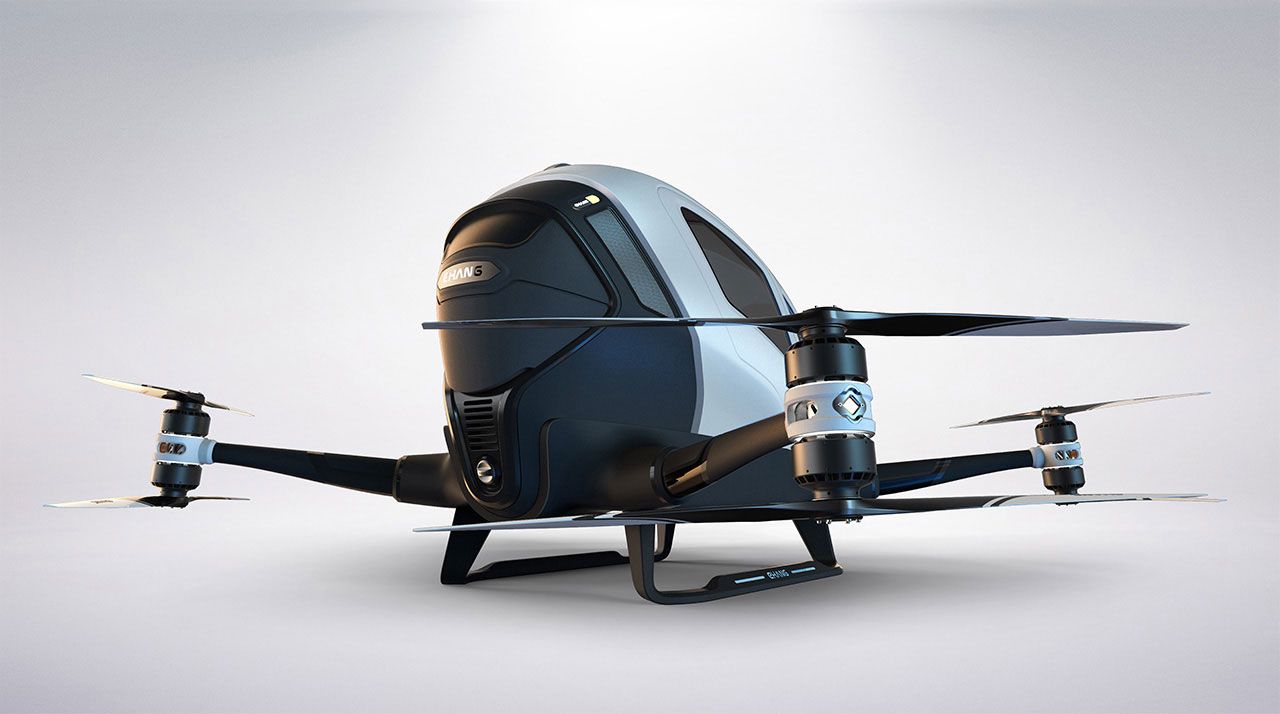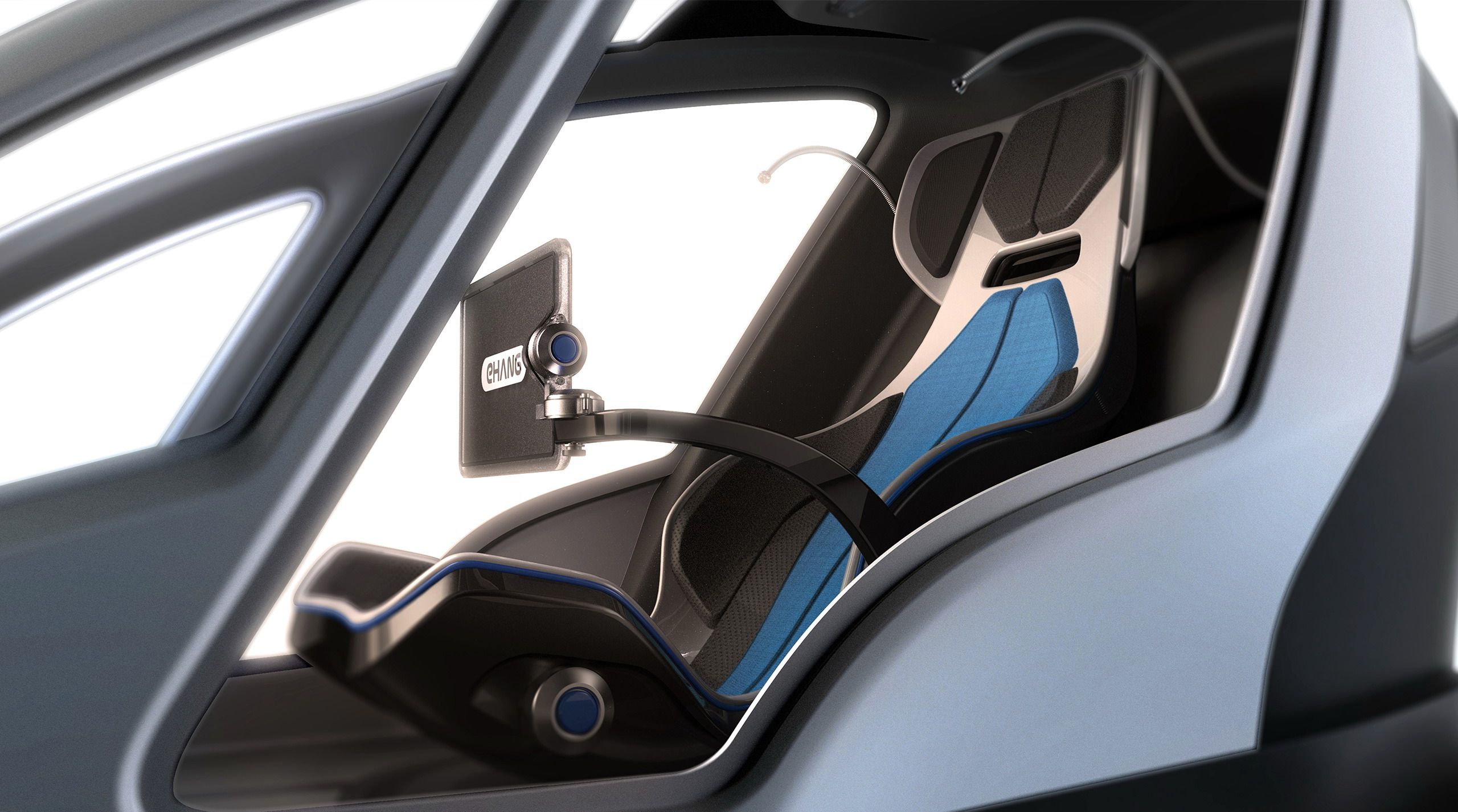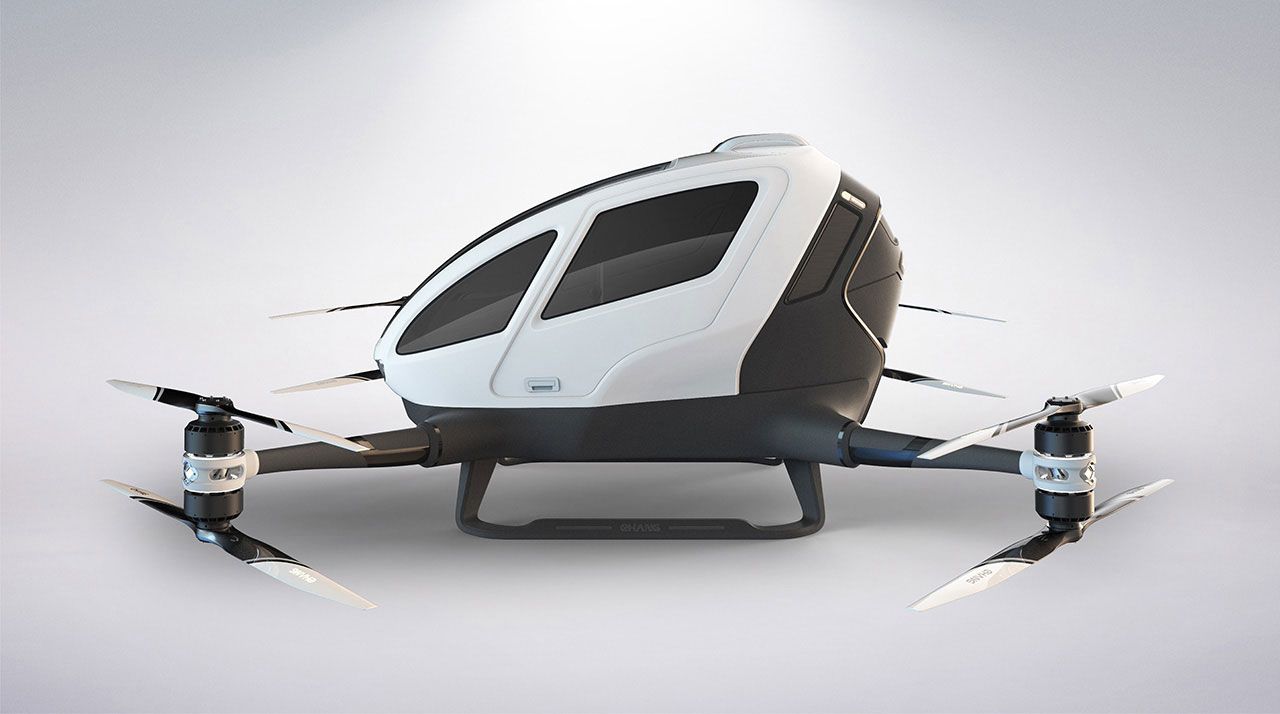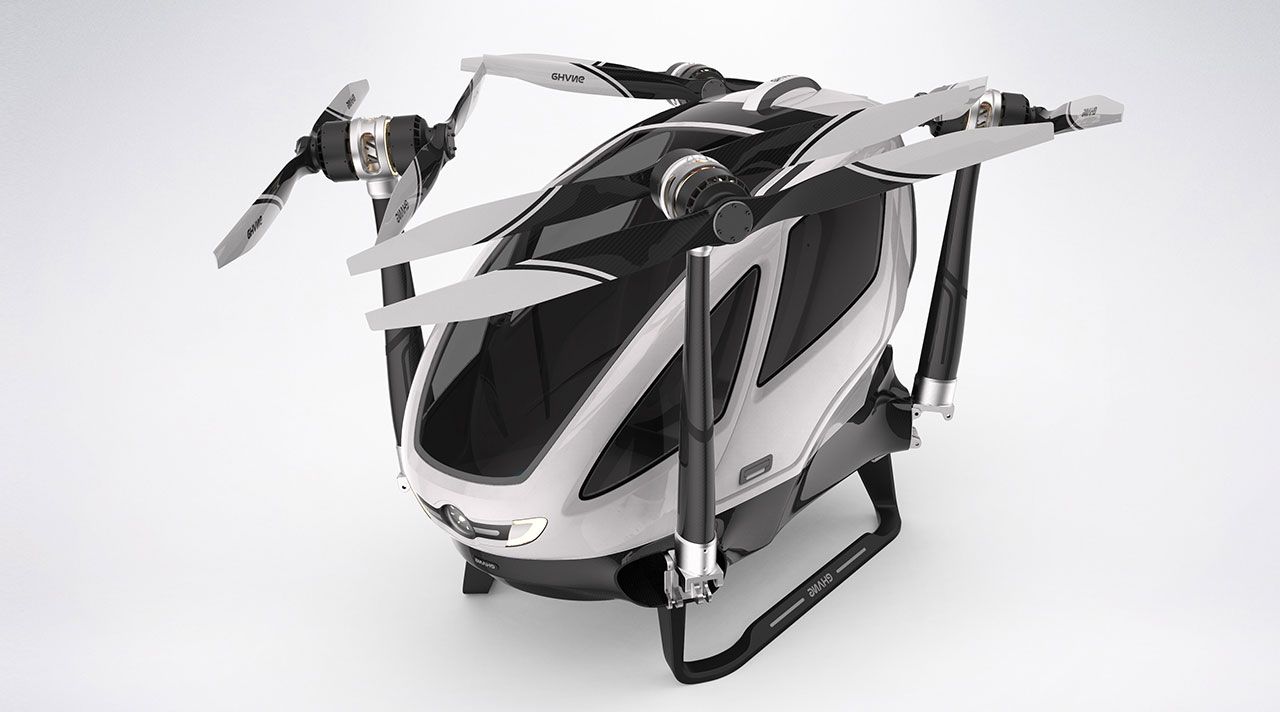If science fiction has taught us anything, it’s that we’ll eventually have flying cars. So where are they? I have yet to see a car that could sustain flight for longer than a few seconds without smashing into the ground, but what if we skipped the flying car idea altogether and went straight to passenger drones? Well, one company is looking to make that a reality, and without diving into all the specifics surrounding the regulations set forth by the Federal Aviation Administration, a company known as Ehang has a promising proposition called the 184 – the world’s first passenger drone.
By now, you probably already know what a drone is. You’ve either played with a cheap one from places like Ebay or Amazon, or maybe you’ve caught the neighbor boy trying to get a candid shot of your wife through the window. But the Ehang 184 is much more than the drones we see people playing with today. This thing promises smooth, autonomous flight over a fair distance using nothing more than electric power. Or, as Ehang puts it, it's the “safest, smartest, and eco-friendly low altitude autonomous aerial vehicle, aimed at providing medium-short distance communication and transportation solutions.”
After reading that, you’ve probably got a few questions about this passenger drone. Surely, you’re thinking, “How does it work?” and “Will it actually revolutionize the way we get from place to place?” Or, maybe you’re asking yourself, “Is something like this really possible and safe?” Well, we can’t exactly answer those questions as well as we would like, but we do know a little about this cool little passenger drone, so check it out in my review below.
Continue reading to learn more about the Ehang 184.
The Exterior Design
To quickly sum up, the Ehang 184 looks quite similar to most of the smaller drones that some of us fly around on a regular basis. It features a central cabin with an arm extending from each corner. At the end of each arm is a set of propellers. The working prototype you see in the images here is finished in a combination of black and white, and looks to feature a number of external lights on the front, bottom, and sides – similar to the standard configuration on traditional passenger planes.
All told, it’s a pretty basic design, with two landing feet and a curved upper body that should cut down on wind resistance and turbulence while in flight. With a total of eight propellers, the drone should be able to maintain a smooth flight, and if programmed correctly, hover in place, which would lead to the potential for some pretty stunning pictures.
Inside the Drone
On the inside, it’s excessively noticeable that this thing is fully autonomous. There are practically no controls to mention. There is no steering wheel or stick, and no way to physically control speed. Instead, there is a large tablet mounted to the “flyers” seat that allows him to plot a course and instruct the drone to take off or land. Based on the demonstrations on Ehang’s website, the tablet system looks to use a Windows-powered tablet with a special app that combines simple controls, weather information, and a Google Maps-like flight planner. From the app, the flyer can monitor the current battery state, remaining distance, height, speed, and engage hover mode. Furthermore, he can control the exterior lighting and switch between power saving mode or balanced mode – the latter of which provides brighter lighting and more spirited flight. The onboard HVAC system and automatic doors are also controlled by the app. As Ehang puts it, it's “simple and advanced, with one single click to take-off and land.”
The images we have here show only one seat inside the cabin, but there is clearly room for a second seat. However, that's the extent of passenger room, so this thing will obviously be reserved for couples or a couple of buddies who want to go somewhere unreachable on four wheels. As someone who has long been a fan of the Star Trek franchise, this drone actually looks quite similar to some of the earlier shuttle craft, albeit with propellers instead an impulse drive system. Hey, we have to start somewhere right?
How It Flies
We don’t know an incredible amount of information about the Ehang 184, but according to the company’s website, the personal drone has a net weight of just 440 pounds, and with a total of eight electric motors, it has a total output of 106 kW (or 142 horsepower). That breaks down to 17.77 horsepower per motor, leaving the potential for plenty of improvement in time. As of this writing, Ehang claims the 184 can travel for a total of 23 minutes at sea level and carry a maximum of 220 pounds. That said, maybe it really is limited to just one passenger for now. An upgrade to the electric fly system, however, could lead to the potential for an increase in load capacity, allowing for a second passenger. The cabin looks like it has enough room for two seats, so it certainly isn’t out of the question.
Now, here’s where things get a little interesting. Obviously, the Federal Aviation Administration will have some kind of regulation over personal drones like this. We can’t just have drones flying around at high altitude, otherwise the potential for collision with another aircraft becomes very real. That said, Ehang claims maximum speed is limited to 62 mph, and its maximum altitude is less than 1,500 feet. Personally, I’m not sure where that falls in with other aircraft, but there's no doubt that a personal drone like this would be restricted in certain areas and must be capable of identifying potential dangers. According to Ehang, the drone will always be connected to a “low-altitude” command center, which will prevent it from flying during extreme weather conditions.
Little is known about the onboard electrical system, at least when it comes to battery capacity, type, charging times, and so forth. Ehang does claim that the 184 has a “full redundancy system” that will allow it to operate a normal flight plan, even if part of the power system begins to operate abnormally. It also has an “Ehang fail-safe system” that Ehang claims will allow the drone to land immediately in the safest possible area should any of its components malfunction or “disconnect.” Furthermore, onboard communication is encrypted, and each drone has its own independent key.
Conclusion
I gotta say I’m pretty excited to see how things turn out for Ehang and its new personal drone. For those of you who don’t know, Ehang already has a much smaller drone, called the Ghostdrone 2.0, which it claims to be the first drone controlled completely by a smartphone, and can even be purchased with a VR headset. That said, Ehang is based out of China, and that leaves me with a little bit of skepticism. No offense to the Chinese culture, but I’ve gotten my hands on more than a few Chinese-made toys, and they haven’t exactly met the “quality” I expected. Not that I’m saying Ehang is the same way, and to be fair, I’ve yet to play with its smaller drone. Still, I would have to see some verified and fine-tuned flights before I would be willing to get into this personal drone.
With that said, I’m still extremely curious about this new personal drone. It’s quite possible that we could be looking at the next stage of personal transportation. Can you imagine what would happen if the brand partnered with Tesla and was able to extend the flight time tenfold? An all-electric drone that could fly you from Houston to Vegas and back could be a pretty nice thing to have. We’re still a long way off from that, but if everything goes right, we could see personal drones like this one flying through the sky in the near future. It might not be a flying car, but it sure is the next best thing.

